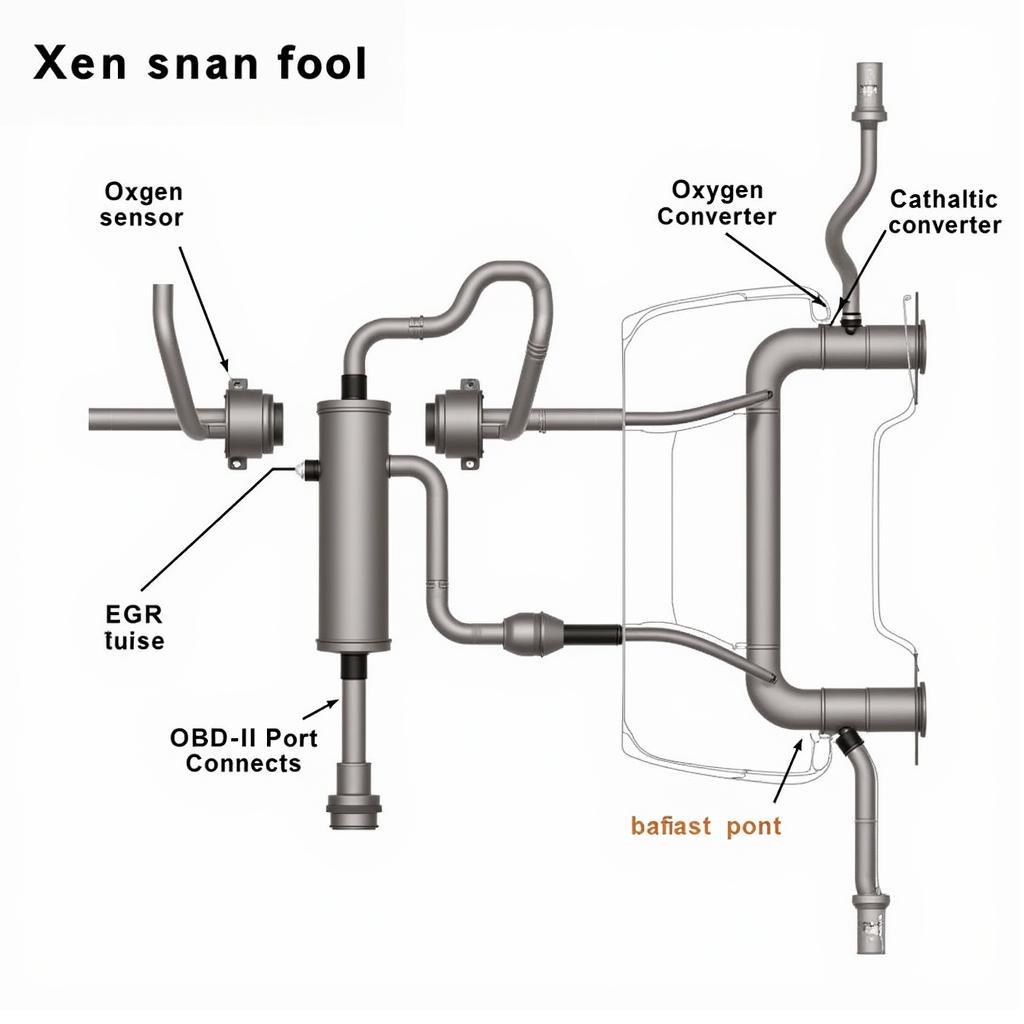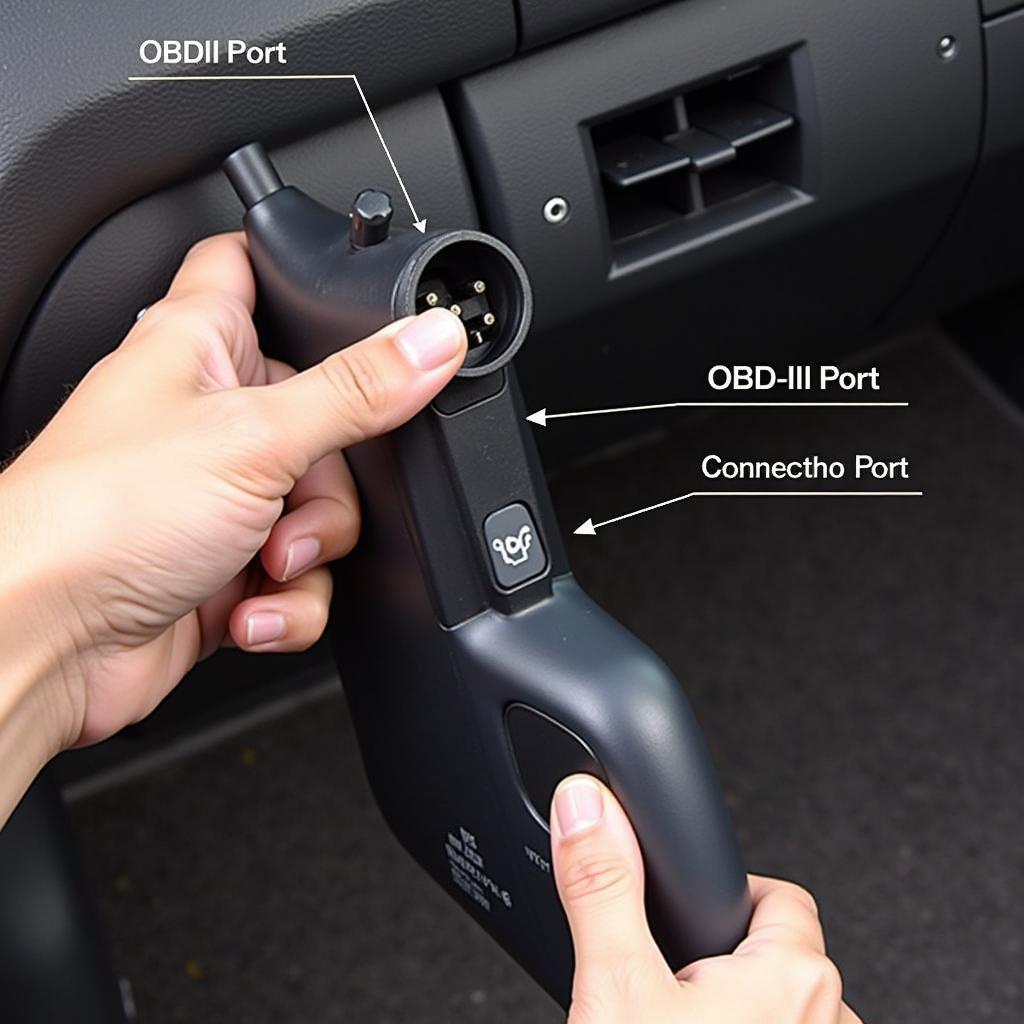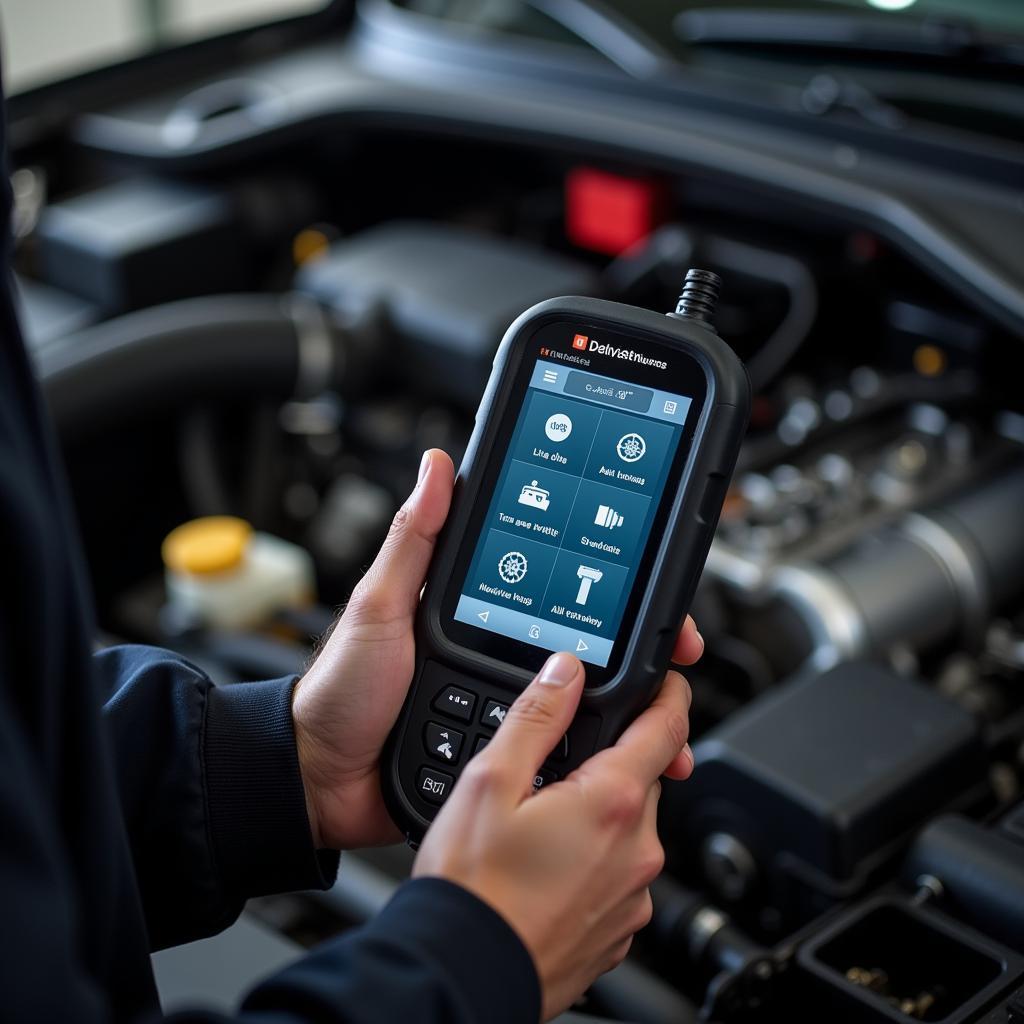Knowing how to check exhaust with a scan tool is an essential skill for any car owner or mechanic. A scan tool can provide valuable insights into your vehicle’s exhaust system performance, helping you identify and diagnose potential problems before they become major headaches. This comprehensive guide will equip you with the knowledge and techniques necessary to effectively utilize a scan tool for exhaust system diagnostics.
After identifying a potential exhaust issue, using a scan tool is the next logical step in diagnosing the problem. This allows for a more precise diagnosis than relying solely on physical inspection. If you’re unsure how to use a scan tool, understanding its functionalities and data interpretation is crucial. For instance, knowing how to test a map sensor with a scan tool can be invaluable. This provides insights into the engine’s air intake, which directly affects the exhaust system.
Understanding Exhaust System Components and Their Relationship with the Scan Tool
The exhaust system is more than just a pipe; it’s a complex network of components working together to reduce emissions and ensure optimal engine performance. Key components like the oxygen sensors, catalytic converter, and exhaust gas recirculation (EGR) system all play vital roles and generate data accessible via a scan tool. Learning how these components interact and the data they produce is crucial for effective diagnostics. For example, an EGR sensor scan tool can pinpoint issues with the EGR system, a common source of exhaust problems.
 Exhaust System Components and Scan Tool Connection
Exhaust System Components and Scan Tool Connection
Connecting and Utilizing Your Scan Tool for Exhaust Diagnostics
Connecting your scan tool correctly is the first step. Locate your vehicle’s OBD-II port (usually under the dashboard on the driver’s side) and plug in your scan tool. Turn the ignition on without starting the engine. The scan tool will establish communication with your vehicle’s computer. Once connected, navigate to the “Data Stream” or “Live Data” section. This displays real-time data from various sensors, including those related to the exhaust system. Issues with connectivity can sometimes arise. If you encounter a situation where your tech 2 scan tool says no communication or your scan tool will not communicate, check your connections and consult the tool’s manual.
 Connecting Scan Tool to OBD-II Port
Connecting Scan Tool to OBD-II Port
Interpreting Scan Tool Data for Exhaust System Analysis
Interpreting the data displayed on your scan tool is key to identifying exhaust problems. Pay close attention to oxygen sensor readings, which indicate the air-fuel mixture. Fluctuating readings can suggest a faulty sensor or a rich/lean fuel mixture. Catalytic converter efficiency can also be monitored through the scan tool. Low efficiency values may point to a failing converter. Additionally, EGR system data can reveal problems with the valve or its control circuit. “How to check exhaust with a scan tool” often involves understanding these data points. Understanding the specific data your scan tool provides for different systems is essential for comprehensive diagnostics. For example, knowing what diesel scan tool can perform reductant fluid quality test is important for maintaining diesel exhaust systems.
Common Exhaust System Issues Diagnosable with a Scan Tool
Several common exhaust issues can be diagnosed using a scan tool. These include:
- Faulty Oxygen Sensors: Incorrect readings can cause poor fuel economy and increased emissions.
- Clogged Catalytic Converter: Reduced efficiency leads to decreased performance and potential engine damage.
- EGR System Malfunctions: Issues with the EGR valve or its control system can cause rough idling and increased emissions.
- Exhaust Leaks: While not directly diagnosed by a scan tool, leaks can influence sensor readings and may be indirectly detected.
“How to check exhaust with a scan tool” encompasses understanding these common problems and how they manifest in the data.
Conclusion
Mastering the use of a scan tool for exhaust system diagnostics empowers you to take control of your vehicle’s maintenance. By understanding how to check exhaust with a scan tool, you can identify and address potential issues early, saving time and money. Remember that this guide provides a general overview, and consulting your vehicle’s specific repair manual is always recommended.
Need further assistance with your exhaust system diagnostics? Connect with ScanToolUS at +1 (641) 206-8880 or visit our office at 1615 S Laramie Ave, Cicero, IL 60804, USA. Our team of experts is ready to help you with all your automotive diagnostic needs.
FAQ
-
What is the OBD-II port? The OBD-II port is a standardized connector used to access vehicle diagnostic data.
-
What type of scan tool do I need for exhaust diagnostics? Most OBD-II compliant scan tools can access exhaust system data.
-
Can I fix exhaust problems myself? Some minor issues can be addressed DIY, but more complex problems may require professional assistance.
-
What are the signs of a failing catalytic converter? Reduced engine performance, rattling noises from under the car, and a sulfur-like smell are potential indicators.
-
How often should I check my exhaust system? An annual inspection is generally recommended.
-
Can a scan tool detect an exhaust leak? While not directly, a scan tool can detect unusual sensor readings that may indicate a leak.
-
Where can I find more information about interpreting scan tool data? Consult your vehicle’s repair manual or reputable online resources.


